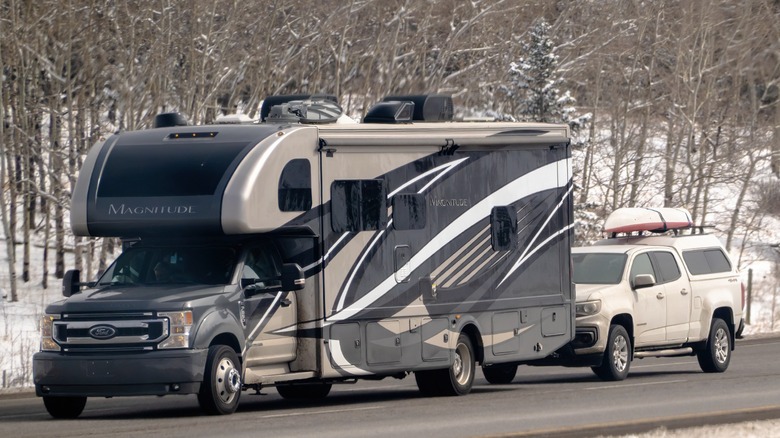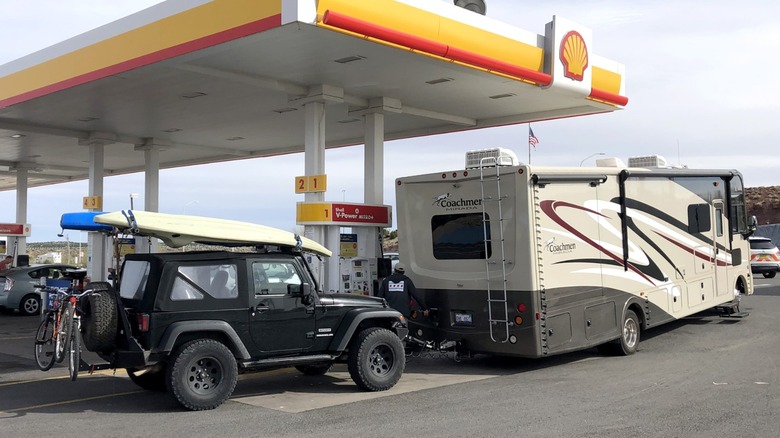What Is Flat Towing And Is It Safe To Do With Your Car?
Traveling to places in an RV is one of the best ways of exploring the country. However, motorhomes are typically large and unwieldy, especially the coolest camping RVs, making them inconvenient to maneuver in tight city streets and urban spaces. You also can't use them for overlanding. So, some campers bring a smaller vehicle with them, like a 2024 Jeep Wrangler. However, this means you'll need another driver to take the car along. If the drive is long enough that you'll need to take turns on the wheel, that means you'll need a minimum of four drivers just for the trip.
One solution to this problem is to just tow the car. For most vehicles, you either need to hook up a trailer or a dolly to ensure you don't damage your car's drivetrain while it's being towed. This entails additional cost, though, as you have to either purchase or rent one. Towing with a trailer will also increase fuel consumption because of the extra weight it introduces on top of the car you're bringing with you.
However, for a select few car models, you can instead flat tow them. Flat towing, also called four-down towing or dinghy towing, involves pulling the car behind you while it has all its wheels down on the road. This makes bringing the car around much easier, as you don't need extra drivers or bulky equipment to bring it with you.
Instead, you just need a tow-bar kit (and the corresponding hitch and baseplate for mounting on both vehicles), safety cables, electrical wiring, and an auxiliary braking system. It might seem a bit complicated to set up for the first time — but once you get it up and running, it makes attaching and detaching your car to your RV quick and easy.
How to know if you can flat tow your car
Most manual transmission cars can be flat towed, especially 2WD models — all you need to do is put it in neutral, and it should be ready for flat towing. You can even do this with four-wheel drive models with a manual gearbox and a manual transfer case that can be set to neutral. You should still check your vehicle's manual, though, as some models might get transmission damage if you do this. Or, if you're looking to get a vehicle to take with you on trips, be sure to ask the dealer for a model that specifically allows it.
One of the reasons you can't flat tow a car not specifically designed for it is transmission lubrication. Many models require the engine to be turned on to circulate the transmission fluid needed to prevent overheating. So, if the wheels turn (thereby turning its gears) while the car is turned off, you might end up damaging its gears, needing an expensive replacement.
But if you already have a car that you love and want to take with you on your travels, you can modify it for flat towing. Some shops let you install a driveshaft disconnect kit, which means your car's wheels can turn without turning the gears and the engine. However, this will likely void your car's warranty, and any damage incurred during flat towing will likely not be covered by the manufacturer.
Even if your car is certified for flat towing, you still need to go through the proper procedure of setting it up to ensure that you don't damage the vehicle. This will vary between model years, so you should consult your manual to know the proper way of setting up your car.

